Part 1 - the hardware
Launched at the 2008 Symbian Smartphone Show, Samsung's i7110 drew a lot of admirers. But getting past Steve Litchfield's high standards will take some doing. Has the i7110 got what it takes? This is part 1 of a two part AAS review. There's no getting round it, first impressions of the Samsung i7110 are awesome. Awesome. A slim metal chassis (118 x 52 x 12.9mm). Brushed metal battery cover and front fascia. Rubberised, hi-grip coating elsewhere. A gorgeously gorgeous (have I mentioned that it was gorgeous?) OLED 2.6" screen. Optical joystick. Plus the usual 2009 specifications for a top end phone/smartphone: 5mp cam with dual LED flash, VGA video recording, Wi-Fi and GPS. What's there not to like, in this candy bar format that should prove more robust than anything else on the market? But before you get carried away, it's important to note that there are some huge issues to be overcome before we're able to judge the i7110 fairly, at least in terms of its long term potential. Let me quote from the script for my upcomingPhones Show programme 70: "The problem is that these devices aren't Nokias. Don't get me wrong. I'm happy for them not to be, but currently they're certificate-locked out of most of Nokia's free add-on software and services. So no Nokia Maps, no Sports Tracker, no Podcasting, no Internet Radio, no Share online, and so on. All of which I could live with, finding some kind of alternatives (Route 66 is built-in, for example, plus there's RSS handling in Web, Shozu for uploads, etc), but there are wider compatibility issues too. S60 YouTube clients emTube and Mobitubia didn't work properly on the two phones, while my staple Handy Safe wouldn't sync between desktop and phone because the affair wasn't using pukka Nokia PC Suite. Most games were fine, by the way, proving that these two phones have plenty of graphical potential to be tapped. Then there's the question of support and updates. We're so used to Nokia providing semi-regular do-it-at-home firmware updates - the complete absence of an equivalent utility or over the air update server from Samsung comes as a huge shock. Now, it's early days, as I say. Samsung (and the developer community they want to engage) know full well what they have to do in terms of catching up in all these areas." But enough of what I/we can't do with the i7110. There's still plenty I can photograph, prod, test and explore... The OLED screen, as on the Nokia N85, is something of a revelation. You don't get the same 'lit up time' power saver as on the Nokia, but otherwise the colours and contrast are just as attractive. True, there are some technological question marks over the longevity of OLED, but in the meantime we're all going to just sit back and enjoy it. In all conditions other than 100% direct sunlight, OLED is superior to traditional transflective and TFT screens. The d-pad and control cluster is interesting and, arguably, somewhat flawed. The central optical joystick, first seen on the INNOV8, works well in Web to give analogue, mouse-like control, but rather gets in the way the rest of the time. Quite often you'll click down on the d-pad centre to select something and your finger will move a micron as you press, resulting in the item above or below being selected instead. The optical joystick can thankfully be turned on and off, although you do have to delve into Settings each time, which is a hassle. The outer ring is fine, with a nice positive action. More worrying are the outer control keys, with the App/Menu key being raised over the left function and call keys - this I can just about live with, since it's not the end of the world to go back to the menu when trying to do something - and with the 'C' button being raised over the right function and hang up keys - this is potentially more dangerous and has resulted several times in me almost losing something important through aiming for the right function key and the 'C' key getting mashed first. Simply, the key raising is poor design, given the angle at which most people's thumb will be approaching the right function key, i.e. reaching over the 'C' key. Grumble.... The keypad's one sheet of thin metal, but the action is nice and positive, with a definite click as each press is made, with clear spacing and with the bottom row of keys not too close to the bottom of the phone. Full marks on this account. By the way, you'll notice my Sunrise theme applied in the photo above. The i7110 (and the INNOV8) ship with a truly horrible set of stylised icons as part of their standard set of three Samsung themes. I guarantee that the first thing any informed owner will do is put on a theme that's brighter and clearer. And, after all, don't you want to show off the OLED screen better?.... Around the rubberised outside are a sliding hatch, shown above, for the proprietary Samsung connector - this services USB, audio out and charging, so it gets plenty of use. I'm torn on these connector designs - on the one hand, there are less ports around the outside of the phone - on the other, it means that accessories from other sources won't fit. Either way, it's a factor to be taken into consideration. Next up the left side are up/down buttons for call/music volume and camera zooming. These are really well-sized and easy to press - which is a slight problem as they get pressed a lot of the time by accident. Down the right hand side are a microSD slot, with tethered cover, a custom key and a high quality camera shutter key. Yet again, the prominence and quality of the keys is both a blessing and a curse. A blessing because they feel great and a curse because I keep pressing all of them by accident. Luckily, the keylock is a bit simpler here than on a typical Nokia S60 phone - here you just press and hold the '*' key from the standby screen. You'll need to use this quite a bit in real life. I also found that the custom key got pressed a lot and so I assigned it to an application that I knew I'd like always running anyway - Music player. Perhaps this should be Samsung's default assignment.... As with the i8510 (INNOV8), the i7110's powered by a biggish 1200mAh battery - combined with the low-power OLED screen, the i7110 should be a good bet in the battery stakes. Moving on to the camera, while not the i7110's main focus (geddit?...), as evidenced by the lack of camera glass protection or still/video toggle keys (as on the INNOV8), it's really very good. I did some direct tests against the Nokia N82, a known (and very good) quantity, and the results were very comparable indeed: The dual LED flash also worked very well in all but the darkest conditions. For this class of phone, I think Xenon might have been too much. Alas, as with the INNOV8, video capture wasn't as good, with a truly horrible audio/video (lipsync) bug, and, along with the wider compatibility issues mentioned above, forms what I would consider a showstopping flaw. The firmware in the test i7110, bizarrely, was from 3 months ago, I'll submit it for re-flashing over Christmas and will hope to bring you some good news in 2009. In terms of audio, there's a 3.5mm breakout adapter in the box, so you can (indirectly) plug in your own favourite headphones, which is something. Playback quality's excellent, as usual. Plugging the i7110 into a PC showed that the USB port runs at full speed, up to 6MB per second, I'm glad that phone manufacturers seem to have mastered USB at long last. The main speaker's on the back and is mono, although quite a lot of sound also comes out of the main earpiece, it seems. Under the hood, the GPS locks on quickly, as you'll see in part 2 in a few days. There's also an accelerometer that's used for auto-rotation of the screen in most, but not all applications and situations. So, a good start, marred only by some wierd key design and the video sync bug. In part 2 of this review, I'll be looking at the software suite, both S60-derived and bought-in, plus I'll summarise my feelings over the i7110. Steve Litchfield, All About Symbian, 3 Dec 2008 Samsung i7110 - part 2: Software and summary As already mentioned in part 1 of this review, the i7110's firmware is so early and the Samsung integration into the S60 ecosystem is so immature that making any qualified judgement on how good or bad this phone is will be somewhat innacurate in the long term. I've been refreshing Samsung's PC Studio download page and trying their online Software Update tool every other day for the past month and still can't seem to make contact - I'll update this review when Samsung sort out their servers and connectivity and when new firmware finally appears. But. In the meantime, you're wondering where the rest of my i7110 review is. With the caveat above, here goes nothing....! As already mentioned, the the built-in three themes are hopeless, with the icons looking far too similar. And all dark. Samsung, see me for some theme suggestions! You can even license my Sunrise theme if you cross my palm with silver..... 8-) As with other S60 3rd Edition Feature Pack 2 phones, there's a choice of standby screen arrangements (the default is shown at the top of this review). Setting up Wi-fi is not obvious - there's unfortunately no standby screen wizard, so you have to either work through 'Easy WLAN' on the first time you need the 'net and hope the access point sticks or do it the hard way by going deep into Settings. Something more obvious for new users would be good here, Samsung. There's only 54MB of flash There's also Google Maps, but it's so embedded in the firmware that you can't (unfortunately) upgrade it from the default v2.2 to the new StreetView-aware v2.3. There are triple problems when considering extra software to run on the i7110. For starters, it's running S60 3rd Edition Feature Pack 2, which is still incompatible to some degree with a fair number of S60 staples (e.g. Python, Mobitubia) - although these teething troubles will be fixed by developers in short order. Then there's the fact that Nokia apply restrictions to some of their add-ons (e.g. Sports Tracker, FriendView, Nokia Maps, Share Online, Podcasting, etc.) so that they can't be installed on a non-Nokia handset. Spoilsports. Finally, anything relying on Nokia's PC Suite to be 'in the chain' for installation or operation won't work either (e.g. Handy Safe) and I'd expect it to be quite a while before Samsung's version gets traction in this niche area. The end result, at the moment, is that add-on software for this and Samsung's other S60 phones is harder to come by than you'd think. As with Mobitubia, emTube wouldn't work, giving an 'update error'. Python and all of Nokia's add-ons simply gave a 'certificate error'. Samsung, apparently, have their own 'Download' system on each device, but it has consistently said that it can't find a download server, so it's anybody's guess what will be eventually be in it. SyncML compatibility with online systems was good - I told My Nokia Backup (for example) that I still had an N95 and the settings worked fine first time for getting my data onto the i7110. This being Samsung and this being very early i7110 firmware, there are an avalanche of bugs, from display sillies to applications that crash to functions that simply don't work at all. It wouldn't be terribly instructive to list the bugs all here, the list would be too long, but suffice it to say that the preview unit's HI5 firmware (Sept 08) is far from good enough for a mission critical smartphone. As mentioned above, I've been trying to get the firmware updated for months. As at January 5th 2009, no servers are contactable for PC Studio to latch onto and HI5's built-in OTA update has no settings in place for trying directly. S60 regulars will know what to expect from the built-in S60 3rd Edition Feature Pack 2 platform. Theme effects are the most contentious addition to FP2 generally and they're used here to better effect than on, for example, the Nokia N78 or N79. Here, effects are mainly limited to horizontal slides that emphasise the degree to which the user has dived into the application/function stacks. So, for example, from the standby screen it would slide left to show an app folder. Then left again to show a sub-folder. The left again into the application, and so on. And slide to the right every time you 'back out', all the way to the standby screen. It's logical and I like it. Messaging and Calendar, nothing new to see here, apart from a few icon tweaks. Interestingly, the standby screen shows a lot more upcoming appointments than on Nokia S60 phones.... could be useful for some people.... Loading music onto the i7110 was easy enough via Windows As with the INNOV8 (i8510), there's a built-in dedicated DSP (Digital Signal Processing) chip and a good range of built-in equaliser presets, including esoterics like '3D wide', 'Soft rock', 'Dance' and 'Classic', all implemented in hardware so as not to drain the phone processor too much when in operation. I assigned Music player to the oft-hit-by-mistake right-hand side 'custom' key, so that, in worst case, I simply had quicker access to whatever music I was playing in the background. Gallery is the old S60 standard, but PhotoBase provides a much more modern grid-thumbnailed interface. Unfortunately, PhotoBase was so unstable under the current firmware that I couldn't even screenshot it properly. Once this is working though, it'll be a pleasure to use and a valid Nseries Gallery rival. Video handling was better than on the INNOV8 (i8510), it seems, with the built in Video Editor working fine with my VGA-recorded i7110 video clips, letting me edit them together, adding transitions and audio overdubs in very powerful fashion. The environment reminded me very much of the video editing functions built into the Nokia N95 Classic - which, believe me, is a compliment! I talked about the great quality from the i7110's camera in part 1 of this review, but it's also worth commenting on the Camera interface. As with the INNOV8, this is a Samsung custom interface and nothing to do with the basic S60 Camera software from earlier devices. It's pretty impressive, with the most common actions simply mapped to d-pad motions (e.g. switching to macro mode or turning the dual LED flash off), with other common actions mapped to numeric keys and with a full drop-down menu system available by pressing Options. I know Rafe's enamoured of the Samsung Camera software as well - it does take a little adjusting too after aeons with a Nokia Nseries phone, but it's worth making the effort. 'Smart reader' is a welcome addition to a S60 device's standard software set. In my tests, it was almost faultless at scanning business cards and putting the person's details into Contacts. It was also pretty darned impressive at general optical character recognition - although it could take a minute or so to work through a photograph of a full page of text, the results were better than having to type the text in from scratch and could be saved straight to Notes. And for further pasting into other applications, of course. Great job, Samsung. Hidden in Tools is the potentially useful 'Print OTG'. No idea what 'OTG' stands for, but suffice it to say that it's a Bluetooth printing utility, along the lines of the one HP produced a while ago for some Nokia phones. With the generic, object-based nature of Bluetooth printing, you're restricted to printing an image, a single SMS text, a Contact card or a Calendar entry, but hey, it's still a cool feature and a lot better than nothing. Now all you've got to do is find a printer with a Bluetooth interface... Continuing the theme of unfriendly app names comes 'DLNA', which appears to simply be a UPnP client, i.e. it interfaces with the UPnP in Windows to help share your PC's media library with the i7110. This connected first time to my Vista laptop, so all's well on this front, though calling it 'Wi-Fi Media Sharing' or similar really couldn't hurt.... DLNA (UPnP) and GPS+, doing their thing... 'GPS+' is Samsung's system for Assisted GPS, i.e. grabbing a week's worth of GPS satellite data from the Internet. Thankfully, each week's download can be set to happen automatically, although you should note that this can't be done over Wi-Fi, since your approximate location via cell towers is needed in order for the satellite almanac server to give out the right ephemeris data. Part of the reason why I'm so frustrated that Samsung are taking ages to get their firmware update servers online is that I'm utterly bowled over by how good the i7110 is and simply want it to reach its potential so that I can start using it day to day. The build quality is supreme, with metal chassis and front/back plates, there's the superb 2.6" OLED screen, the great keypad and fabulous stills camera, backed up by some nice software additions and hardware handling of graphics and music. On the downside, there's the omnipresent audio sync bug in video captures, a litany of other more minor bugs, the proprietary serial connector, an annoyingly easy to hit right-side custom key and a distinct tardiness from Samsung with regard to updates. Watch this space for an update to this review once Samsung's servers eventually come online.... Steve Litchfield, All About Symbian, 6th Jan 2009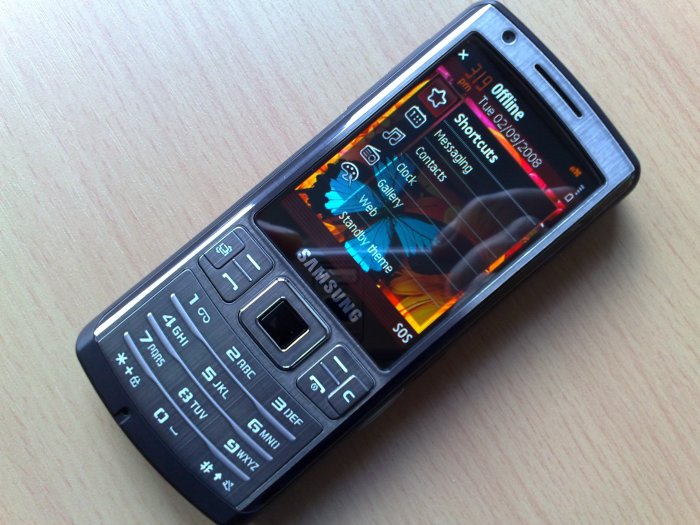
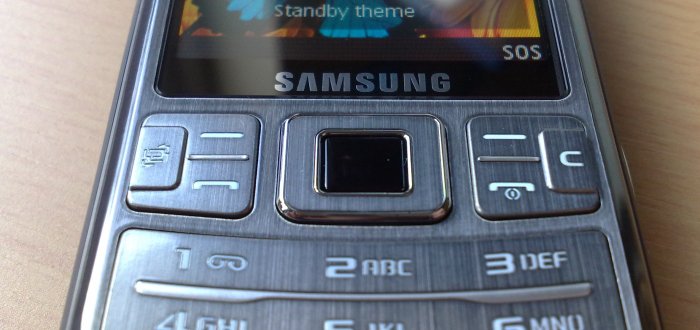
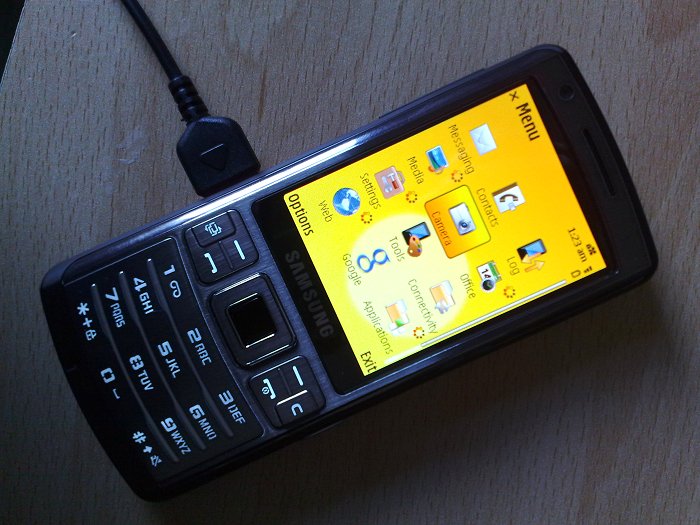
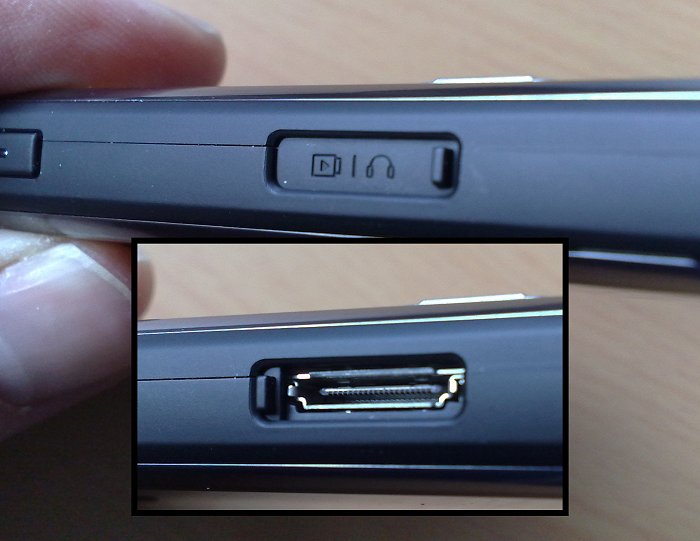
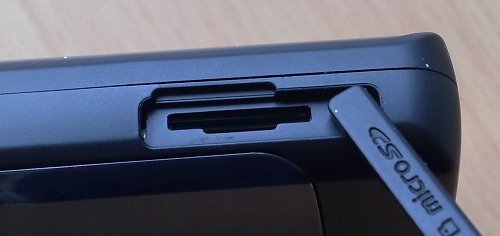
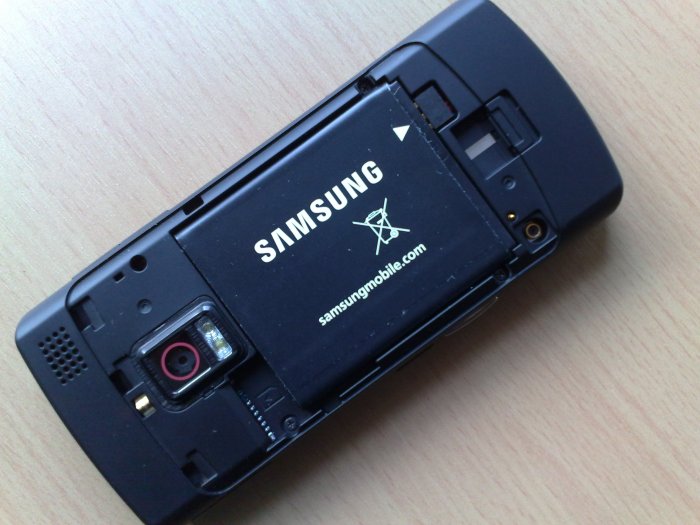
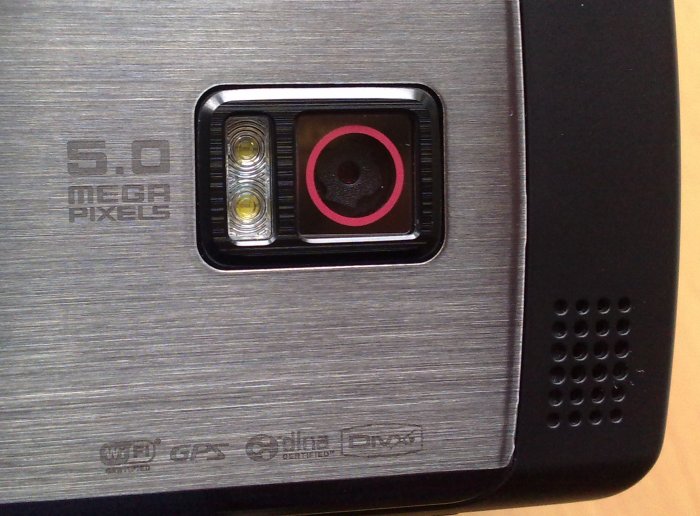

Test shot 1: Detailed grass in winter sunlight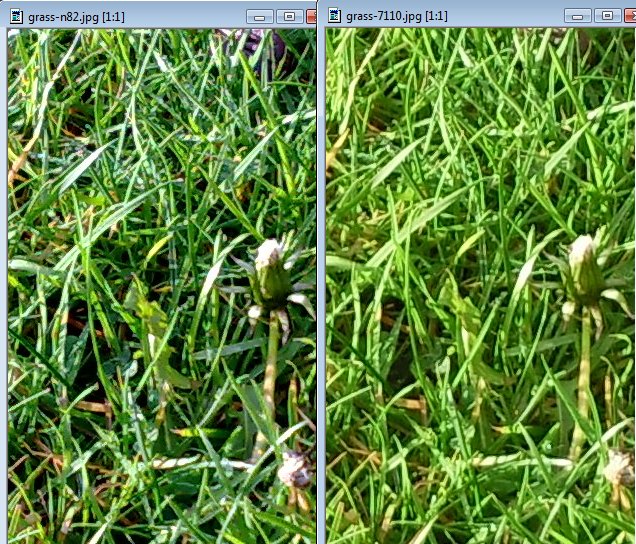
The i7110 perhaps wins this shot, with better, more natural colours.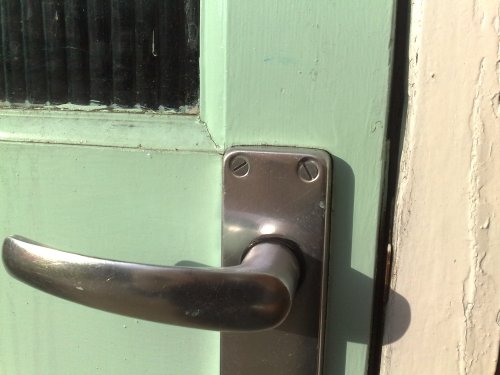
Test shot 2, door detail, also in weak winter sunlight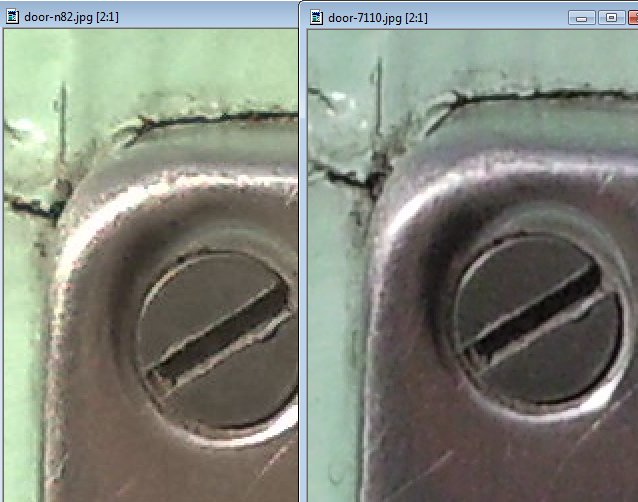
And down at 1:1 level the N82 wins by a small margin, although the i7110's camera is astoundingly good considering that it's not 'a camera phone' Interface and software
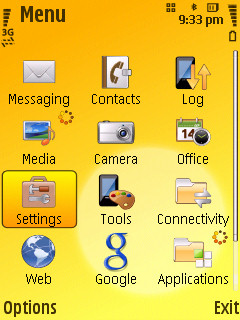
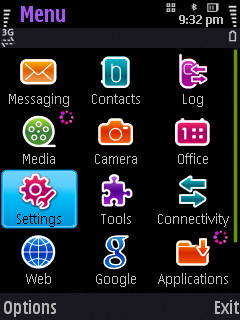
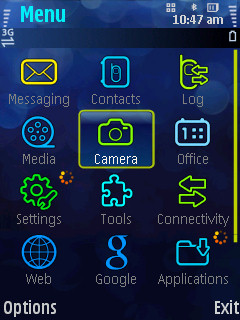
On the left, my Sunrise theme (an example of a modern 'bright' SVG theme with default icons), on the right two of Samsung's three included themes - they doesn't look too bad on the computer screen, but they're too dark and stylised in real life.... in my opinion...!

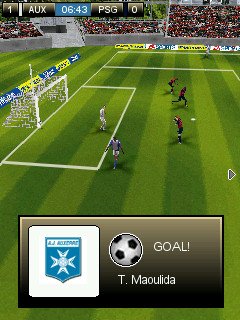
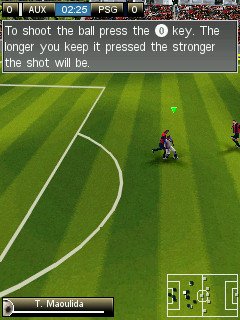
FIFA 08 claims to be Symbian native (in App Mgr) but looks and plays like the regular Java version...
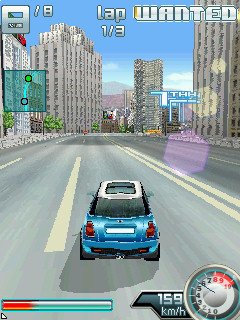
Similarly for Asphalt 4, which is jerky and blocky - surely this is just the Java game in new packaging?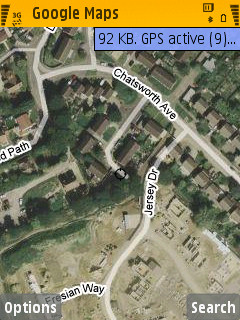
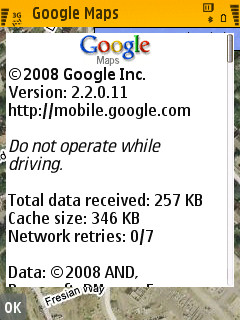
Stuck at v2.2 for the current firmware, at least...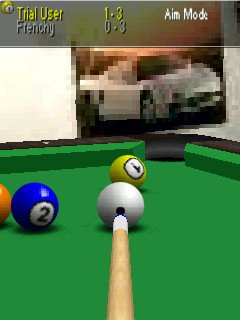 Many S60 regulars (picked somewhat at random!) did work fine though:
Many S60 regulars (picked somewhat at random!) did work fine though:
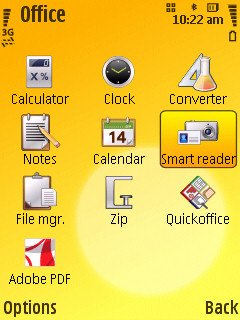
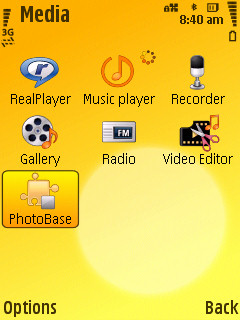
Peeking round some of the app folders... Note that I've been installing some extras to the main 'Applications'...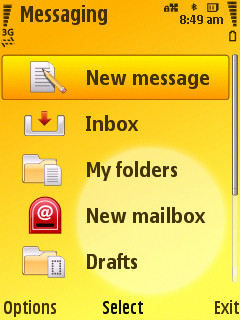
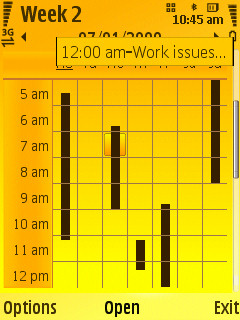
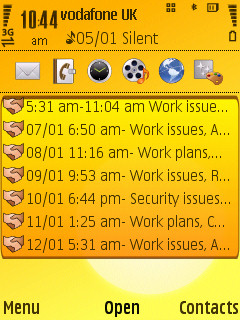


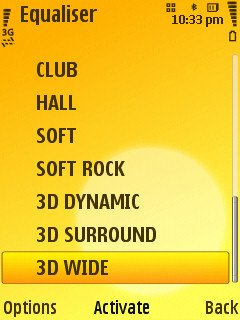
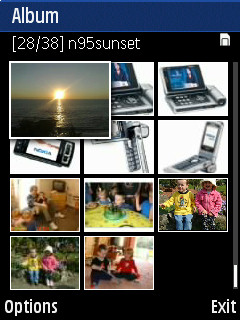
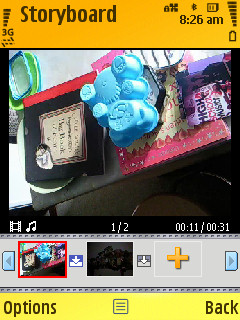
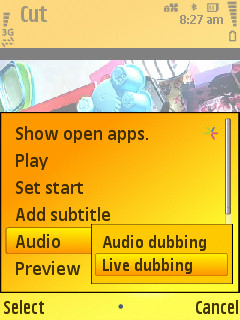
PhotoBase (OK, I sneaked one screen before it crashed!), plus two screens from Video editor...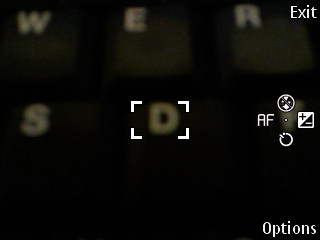
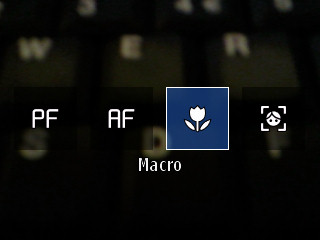
The d-pad is used for the main control functions. For example, press 'left' and up pop the focussing mode choices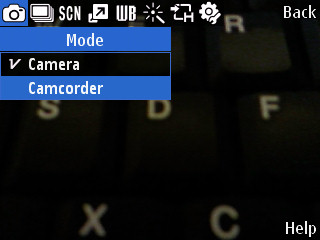
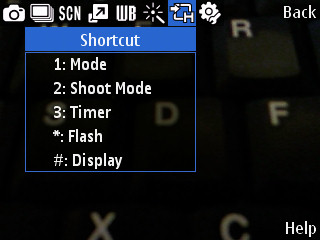
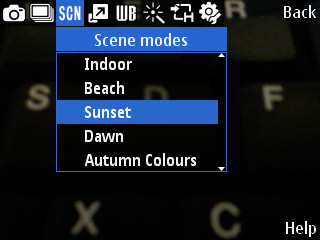
Some example drop down menus from 'Options'...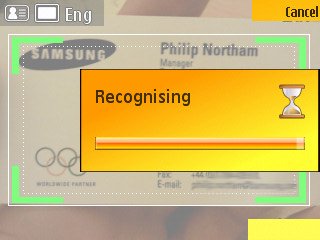
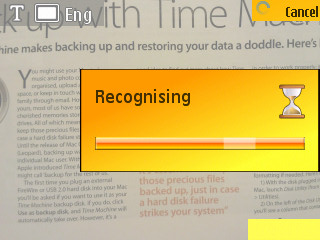
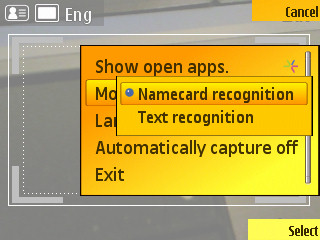
Smart reader in action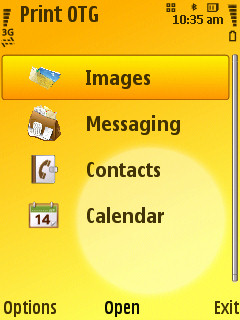
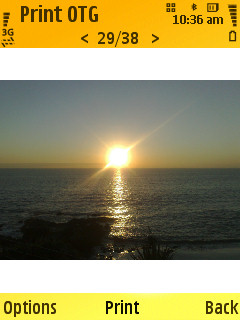
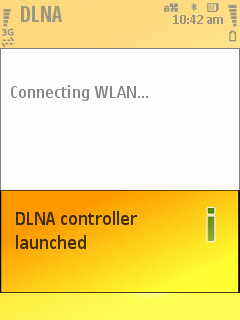
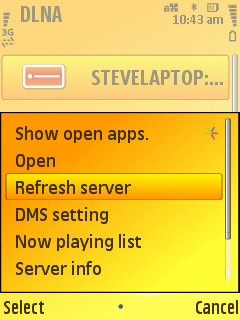
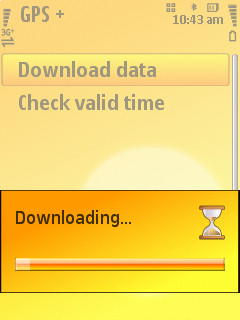
(Temporary) Verdict
 Source: http://www.allaboutsymbian.com/reviews/item/Samsung_i7110-part_2_Software_and_summary.php
Source: http://www.allaboutsymbian.com/reviews/item/Samsung_i7110-part_2_Software_and_summary.php

No comments:
Post a Comment